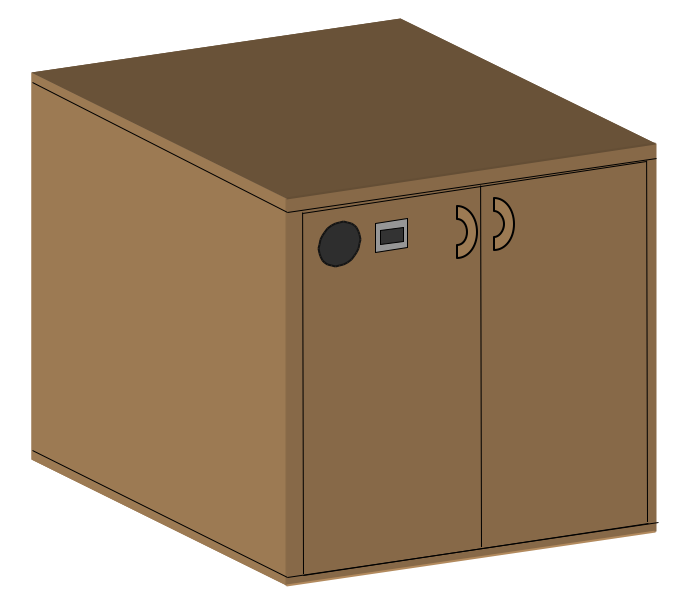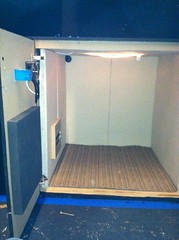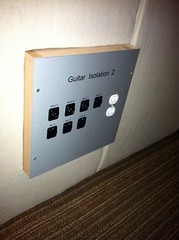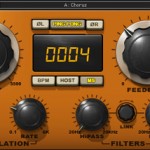
A Bigger Box

This week we pretty much completed our new guitar amplifier isolation boxes. The new boxes were built to be larger than our previous ones. We had three boxes built in all with two for guitar amps and a third for our Leslie. The guitar boxes are done, but I still need to finish wiring the power for the Leslie box. Technically, the Leslie doesn’t need power since it is supplied by the B3, but I wanted to get a light in the new box along with an exhaust fan.
Last Sunday we used one of the guitar boxes with temp’ed in wiring, and it worked great. One advantage to the new size was our guitarist was able to simply wheel his road case with his combo amp in, get it mic’ed up, and go.
The new boxes are the same essential design that Chris Briley did for our Browns Bridge and Buckhead campuses. HERE is a link to the document I posted on them a few years ago that outlines how the electrical is wired.
The boxes are basically 4’cubed and built from MDF. The insides are lined with 2″ Owens Corning 703 wrapped in fabric to deaden the sound inside–just because it’s a box doesn’t mean we want it to sound like one. I then glued some left over acoustic foam we had from our studio on the inside of the doors. The carpet on the floor of the boxes came from scraps our Facilities department had. The panel inside was custom made by Rapco. I have a couple photos of the new boxes below, but there are a few more over at Flickr.
Feel free to throw questions at me in the Comments section. If you would like me to put you in contact with the guy who built ours to see about getting some built for yourself, you can contact me HERE.



 Previous Post
Previous Post



How do you guys handle effects loops and channel switching? Or do you generally encourage the guitarists to run pedals straight into a one channel amp?
Currently, I could probably do a channel switch. If you look at the top row of connectors on the panel, you’ll see several XLR’s. One of those is always the SGI coming from the stage. The one next to it could be used for channel switching. The two next to that were originally NL4’s, but I decided at the last minute to change them to XLR’s.
When these were originally designed over 5 years ago, we all had infrastructure on our stages to place an amp head on stage connected to a cab back in the box, but over the last couple years we started striking the entire stage before the message so everything amplifier needs to live offstage. Those 2 additional XLR’s are there for potential use as an FX loop, but they don’t currently go anywhere. It is extremely rare for us to encounter a guitar player who wants an FX loop so I’m not worried in the short term. Long term, however, I’ll run an additional snake to our amp room to facilitate FX loops.
The labeling on the panels is a little confusing because it corresponds to labeling on the patch panel in our amp room and is also consistent with our other campuses. A lot of people would probably consider the “sends” in the box as “returns” since they return signals from the stage, but the reality is they can be used for either via a gender-changer if need be. In the end, we’ll have 6 lines running between each box and the amp room which should be able to accomodate most setups.
What amps and guitar gear are most of your players using? The NPOnline tones are great. I remember reading somewhere that most people were using PODs, but I was wondering if some prefer the analog world. If you can give any insight into favorite amps/pedals (aka how they get their tone), that would be much appreciated!
There are a variety of different amps. I see everything from Fender to Bad Cat to Matchless to 65 Amps to Vox. There are also a handful of POD HD’s which sound better than POD’s in the past, but it’s still not the same in the context of a mix. Some guys are also starting to use the POD HD’s with amps which, in my opinion, is FAR FAR better than just a POD.
does the opening for the exhaust fan let out alot of sound?
I don’t know how I would quantify how much sound gets out, but as soon as you break a sealed acoustic space it will leak. These weren’t built for perfect acoustic isolation, though. We need to keep amps off our stage since the stage gets cleared for the message. Since amps have to sit offstage, we attenuate them a bit in the boxes so that the guys backstage can still work.